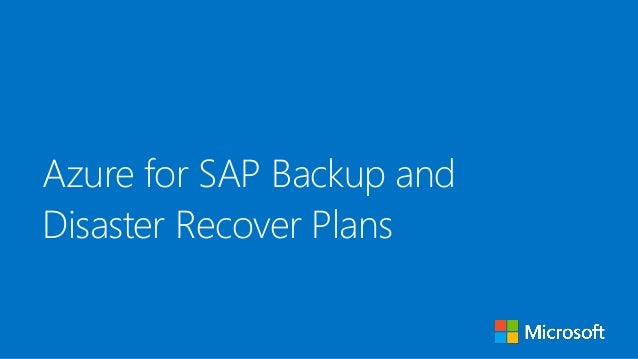High Availability & Disaster Recovery Support of Azure for SAP Workloads
The following high availability provisions are applicable to Azure VM-based deployments:
- Window Server- Microsoft supports Windows Server Failover Cluster in Azure VMs with replication for non-shared storage. While SAP does not tests its applications with replication for non-shared storage, Microsoft can easily guarantee full transparency of this technology for SAP applications. Hence, the SAP applications can be operated by following the guidelines on how to set up HA configurations for SAP NetWeaver applications on Azure.
- SUSE Linux Enterprise Server for SAP Applications- SUSE and Microsoft supports the SUSE Linux Enterprise Server for SAP Applications based cluster for HANA System Replication and SAP NetWeaver ASCS.
- Red Hat Enterprise Linux HA Add-on- Red Hat and Microsoft supports the Red Hat Enterprise Linux HA Add-on for HANA System Replication and SAP NetWeaver ASCS.
Regarding SAP HANA on Azure (Large Instances), Microsoft supports some SAP HANA high-availability and disaster recovery capabilities, including:
- Storage Replication- The storage system's ability to replicate all the data to another HANA Large Instance stamp in another Azure region. SAP HANA operates independently from this method. This functionality is the default disaster recovery mechanism offered for HANA large Instances.
- HANA System Replication- It is the replication of all the data in SAP HANA to separate SAP HANA system. The recovery time objective is minimized through data replication at regular intervals. SAP HANA also supports asynchronous, synchronous in-memory, and synchronous modes that are used for SAP HANA systems within the same datacenter or less than 100 km apart. With the help of the current design of HANA Large Instance stamp, the HANA system replication can be used for high availability within one region only which also require a third-party reverse proxy or routing component for disaster recovery configurations into another Azure region.
- Host Auto-Failover- It is a local fault recovery solution for SAP HANA that's an alternative to HANA system replication. If master node becomes unavailable, you can configure one or more standby SAP HANA nodes in Azure scale-out mode, and SAP HANA automatically fails over to a standby node.
SAP HANA MCOD (Multiple Components in One Database) deploys an overlaying work scenarios work with the HANA and DR method listed above. Exceptionally, the use of the HANA system Replication with an automatic failover cluster based on Pacemaker supports only one HANA instance per unit. Whereas for SAP HANA MCOD deployments, only non-storage-based HA and DR methods works if more than one tenant is deployed.
A multipurpose DR setup is where the HANA Large Instance unit on the DR site runs a non-production workload. In case of disaster, the customers would shut down the non-production system, mount the storage-replicated (additional) volume sets, and then starts the production of the HANA instance. Most of the customers that use the HANA Large Instance disaster recovery functionality uses this configuration.




Comments
Post a Comment